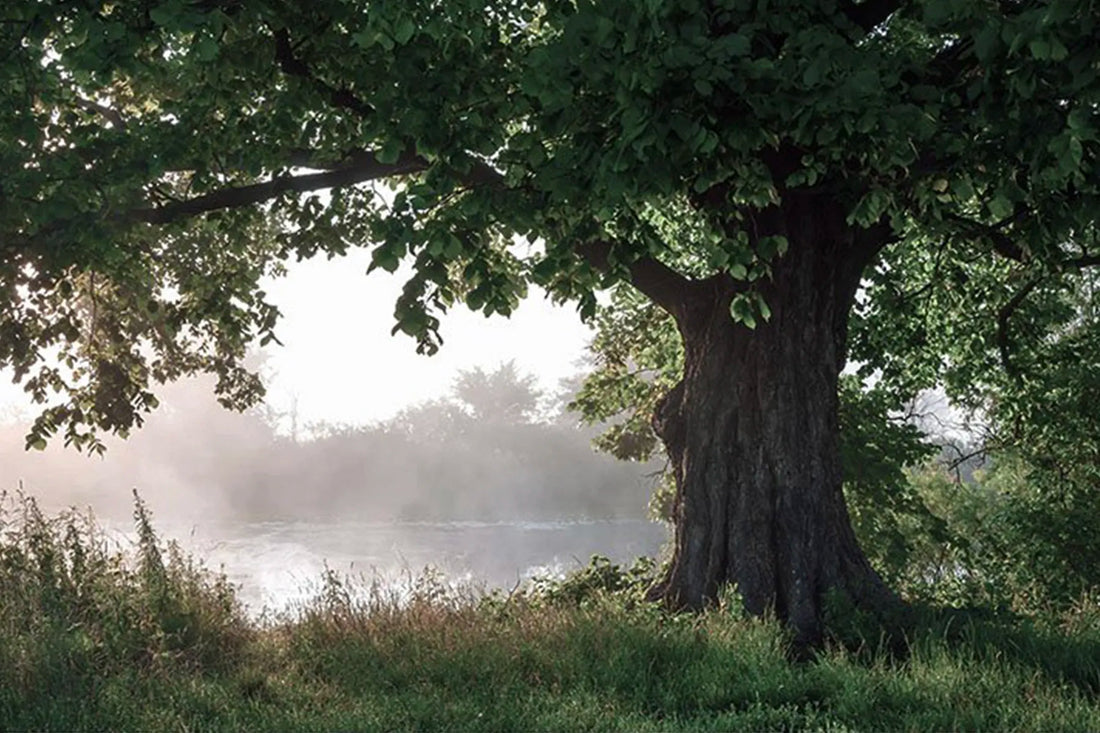
5 min read
Green Certifications: Forest Stewardship Council (FSC)
WLLW examines the role of the Forest Stewardship Council in advancing responsible forestry practices that maintain biodiversity and support community livelihoods.
WORDS WLLW Team
The Forest Stewardship Council (FSC) is an international non-profit established in Germany in 1993 that promotes responsible management of the world's forests. FSC-certified forests are those that are managed to the highest environmental, social, and economic standards, with over 36.4 million acres certified in the US as of July 2022. In these forests, trees harvested are replanted or allowed to regenerate naturally, ensuring that forests are managed with due respect for the environment, wildlife, and the people who live and work within them. Beyond their role in providing raw materials, forests, which cover 30 percent of global land area and are home to 70 percent of terrestrial animals and plants, play a crucial role in supporting biodiversity. They currently store 283 billion tons of carbon and are essential in water purification and soil regeneration, highlighting the importance of sustainable forest management practices that the FSC aims to enforce.
At the moment, the FSC is considered the most credible forest certification scheme. However, it is not without criticism. Some argue that the FSC's certification standards might not be stringent enough to guarantee truly sustainable forestry practices and may not sufficiently protect biodiversity. Furthermore, there have been instances where companies use the certification for greenwashing, convincing consumers of sustainability, or as a cover for illegal logging activities. Despite these concerns, the FSC continues to play a pivotal role as the US remains the world's largest importer of tropical wooden furniture from timber-producing countries, with garden furniture representing approximately one-fifth of the market. Formerly healthy forests in countries such as Indonesia, Malaysia and Brazil are being depleted at an unprecedented rate as legal and illegal logging in an effort to keep up with demand for wood products.

Categories serviced:
FSC certification can apply to a range of solid and composite wood products, which includes veneers, plywood, laminated timber, doors, window frames, flooring, wood furniture, upholstered furniture with wooden frames, tools, cookware and toys.
What certification indicates:
The wood used in a product, or its derivative forms such as plywood, chipboard, paper and wood veneers, has been sustainably sourced from well-managed forests and/or is recycled.
For example, a wooden patio table and chairs carrying the FSC-certified label signify that the product has been harvested from responsibly managed forests. Such certification ensures that the production is environmentally conscious, socially beneficial – aiding local communities and indigenous populations – and ethically made. It guarantees that workers receive fair wages and work in a good environment, and it also attests to the economic viability of the practices used.
There are three certification categories: FSC 100% (where all materials come from responsibly managed, FSC-certified forests), FSC Recycled (made from 100% recycled materials), and FSC Mix (made with materials from a combination of FSC-certified forests, recycled materials and/or FSC-controlled wood).
How does it work?
There are two types of FSC certification: Forest Management and Chain of Custody. In both cases, certification involves independent FSC-accredited bodies verifying that all FSC-certified forests conform to the requirements contained within an FSC forest management standard. Certifiers are independent of FSC and the companies they are auditing. This third-party verification is crucial to the integrity of the FSC system.

Xylo Bench made with FSC-certified teak by Munder Skiles. Photo courtesy of Munder Skiles
 Nikari, a Finnish wood design studio and furniture manufacturer, uses FSC-certified wood in their products. Photo courtesy of Nikari |
 Honor 10 Drawer dresser designed by Terence Conran. Photo courtesy of Benchmark |
Benefits and Downsides:
Pros:
- Promoting sustainable forestry: The FSC promotes sustainable forestry practices by requiring forest managers to meet certain environmental, social and economic standards.
- Protecting forest ecosystems: The standards include requirements for protecting endangered species, conserving biodiversity and maintaining forest health.
- Supporting fair labor practices: The program advocates for fair wages and healthy working conditions for all workers involved.
- Third-Party Verification: Third-party verification of forest management practices is required, which increases trust and credibility in the industry.
Cons:
- Cost: The cost of obtaining and maintaining FSC certification can be high for forest managers and product manufacturers, particularly for smaller operations or those in developing countries. These costs are often passed on to the consumer, leading to prices that can be 10-20 percent higher than non-FSC alternatives.
- Limited reach: The program may not reach all areas of the forest industry or all regions of the world, which can limit its impact.
- Certification standards: While the FSC aims to promote sustainable forestry, some critics argue that its certification standards are not strict enough to ensure truly sustainable forestry practices. There is also concern that the program may not go far enough in protecting forests and biodiversity.
- Greenwashing: There are instances where companies have used FSC certification as a means of greenwashing, giving consumers the false impression that their products are sustainable. Additionally, the FSC certification has been criticized for being used as a cover for illegal logging, undermining the certification's credibility.
- Regulation of third-party verification: With over 80 certification assessment bodies that compete for business, there is a risk of inconsistency and a lack of stringency in audits. It is critical for the FSC to maintain rigorous standards in their accreditation of auditors and the enforcement of regulations.
- Complexity: The FSC certification process can be complex and time-consuming, which might be a barrier for smaller operations or those without the resources to navigate the requirements.
 The Hudson Company Bare, White Oak Flat Sawn wood flooring. Photo courtesy of The Hudson Company by Matthew Williams |
 The Hudson Company Bare, Ditch Plains, Shrunk Face oak flooring. Photo courtesy of The Hudson Company |
Featured Image: Dmytro Kosmenko/Adobe
Photography: Munder Skiles, Nikari, Benchmark, The Hudson Company, Matthew Williams


